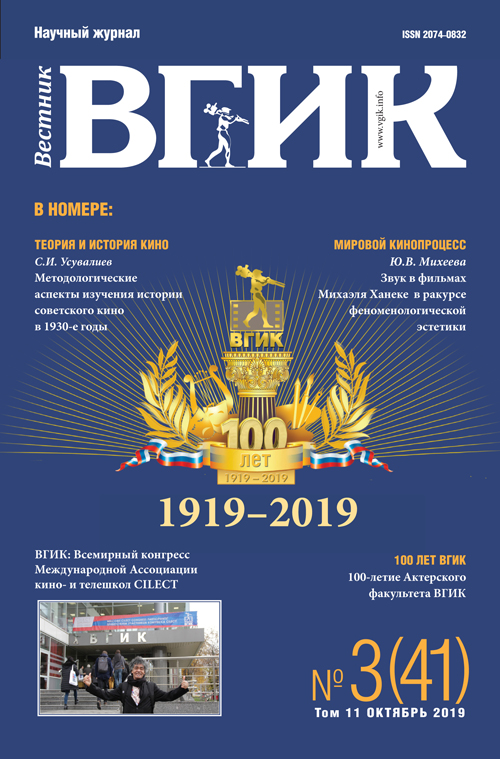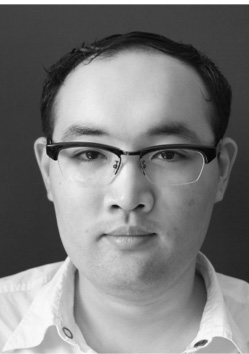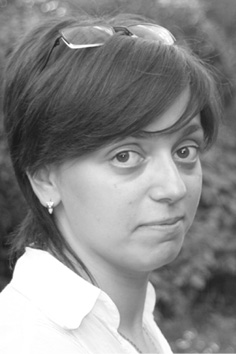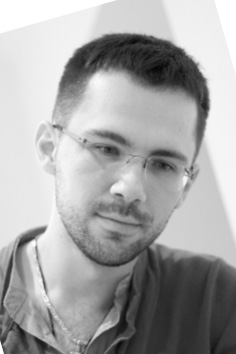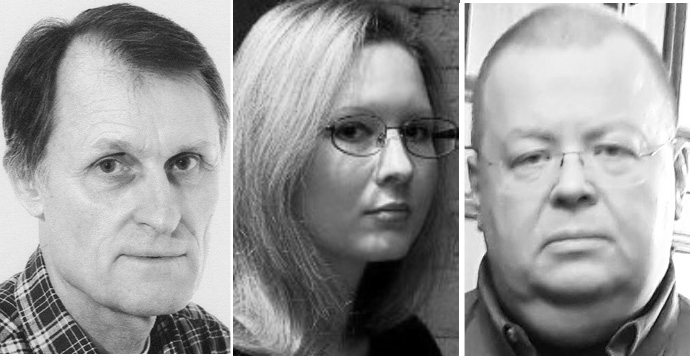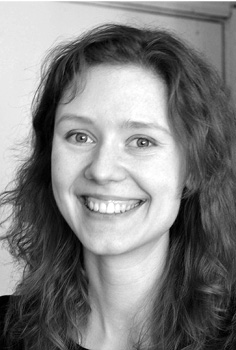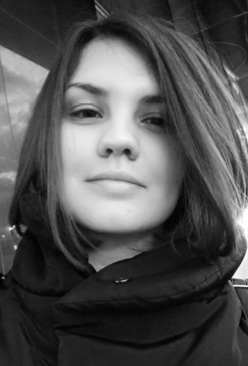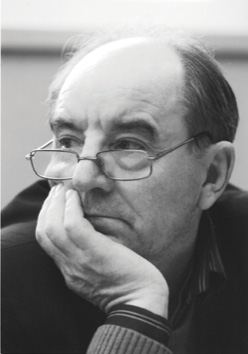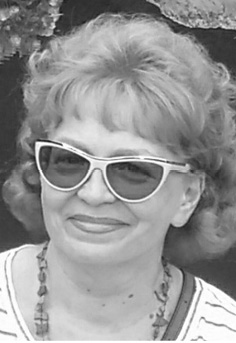卷 11, 编号 3 (2019)
- 年: 2019
- 文章: 20
- URL: https://journals.eco-vector.com/2074-0832/issue/view/923
- DOI: https://doi.org/10.17816/VGIK113
完整期次
CHRONICLE IN DETAIL | CURRENT EVENTS
Centenary of the oldest film school
摘要
On September 1, 2019, the All-Russian State Institute of Cinematography named after S.A. Gerasimov (VGIK) celebrated its 100th anniversary.
The centenary anniversary of one of the oldest film schools in the world is celebrated both in Russia, where the art of cinema enjoys special recognition among Russians, and in the countries of near and far abroad, where numerous graduates of VGIK work, honoring their Alma Mater.
In connection with the anniversary, the President of the Russian Federation Vladimir Putin expressed gratitude to the VGIK staff "For services in the development of national culture and art, many years of fruitful work." On the days of the anniversary, Vladimir Putin visited VGIK, examined the classrooms, got acquainted with the work of the Faculty of Animation and Multimedia, the Faculty of Cinematography, and held a meeting with masters, graduates and students of the university.
 8-8
8-8


THEORY AND HISTORY OF CINEMA | AUDIOVISUAL ARTS
Sergei Eisenstein's ideas in the context of modern cinema art. Audiovisual counterpoint
摘要
Sergei Mikhailovich Eisenstein is not only a great filmmaker but also one of the first theorists of cinema, whose ideas have not lost their significance to this day. Exploration of Eisenstein’s theoretical heritage reveals the relevance of many of his propositions based both on the practical experience of the director and on his theoretical conclusions and even insights.Such ideas include, in particular, the concept of «audiovisual counterpoint» introduced by Eisenstein in the famous manifesto «Budushchee zvukovoi fil'my. Zaiavka» («Statement on Sound») of 1928. In this manifesto, a number of provisions expressed the authors' concern about the possible «non-cinematic» use of sound in films, and at the same time, the future possibilities of sound in cinema. In particular, it was argued that «only the counter-punctual use of sound in relation to the visual editing piece gives new opportunities for montage development and improvement». Subsequently, Eisenstein clarified or even revised some of the points put forward in 1928. With the experience gained in the sound field of filmmaking and the logical development of theoretical research, the idea of audiovisual counterpoint as a cinematic method grows into the problem of artistic imagery, and the contrasting of image and sound becomes part of the task of creating polyphonic (polysemantic) audiovisual solutions in a motion picture. The essay discusses the relevance of Eisenstein's ideas within contemporary artistic and theoretical contexts.
 10-16
10-16


Methodological aspects of studying the history of Soviet cinema in the 1930s
摘要
The article is devoted to the history of the Russian film studies and methodology of film history as science using the example of the Introduction of History of the Soviet Film Art by Nikolai Iezuitov (1899–1941), one of the founders of the national film studies. Since the manuscript of History of the Soviet Film Art — the first history of the Soviet cinema — has not yet been published and introduced into scholarly use, the author pays special attention to archival sources.
Despite a number of essays and discussions about film history and its methodology, a fundamental scholarly work on the historiography of the history of Soviet and Russian cinema has not yet been written. The relevance and novelty of the article is that it is based on the study of archival manuscripts of Nikolai Iezuitov. The exploration of early approaches to the study of the history of the Soviet cinema is important both historically and pedagogically.
One of the most important sources of the concept of film history at an early stage of the national film studies is Iezuitov's Introduction to History of the Soviet Film Art. The Introduction is valuable because: 1) it is a rare evidence of reflection on the foundations of film history as scholarship and its methodology; 2) it is given by the author of the first history of the Soviet cinema; 3) it is represented by the author not as a separate “abstract” essay but as a part of the history itself.
The Introduction defines the scholarly tasks and content of film history; overviews foreign books on the history of cinema; emphasizes specific periods of Soviet film history; and indicates the principles of work with relevant sources.
Iezuitov’s main principles in relation to film history are established in connection, firstly, with Soviet history scholarship; and secondly, with the vision of film history as the history of film art. Thus, film history, according to Iezuitov, is the unity of Marxist understanding of history and art-historical (stylistic) analysis of films and the main film movements in Soviet cinema.
 17-28
17-28


FILM LANGUAGE AND TIME | IMAGE GENESIS
The canons of capturing reality in the documentary cinema of the 1960s
摘要
The essay deals with the problems of new expressive means that appeared in Soviet documentaries in the late 1950s — 1960s. It analyzes the main expressive means of capturing the new screen reality on examples of Castles in the Sand (dir. Yakov Bronstein and Algimantas Vidugiris), Katyusha (dir. Viktor Lisakovich), Marina’s Life (dir. Leonid Kvinikhidze), Look at the Face (dir. Pavel Kogan), and Nikolai Amosov (dir. Taimuraz Zoloev). Its main interests are plastic solutions, the frame structure, the designation of the object of shooting and the author's presence in the interframe space or inside the frame; changes in the attitudes of the author and the protagonists, the author’s attention to personality, and the expressiveness of human presence in the film.
The essay discusses the existential and philosophical components of the documentary films of that period, as well as changes in the aesthetic and ideological pictures of the world, which influenced the principle of capturing reality and the concept of authenticity. Documentaries of the Thaw are viewed via the formation of new canons of capturing screen reality, including new capturing techniques (hidden camera, habitual camera, method of provocation), principles of intraframe editing and new space-time frame characteristics. The principles of intraframe editing, new spatial and temporal characteristics of the frame are presented in the progressive analysis of assembly phrases and the compositional structure of the frame of films. The author examines the principles of the formation of the protagonists' characters, the positioning of a person within the frame and the general stylistic paradigm of documentary genres. Taking as examples film portraits, film essays and polemical films, the essay explores novel means of forming spectator paradigms in the documentaries of the Thaw within the context of the author’s attitude towards the selected material and the protagonist.
 30-41
30-41


The evolution of visual instruments of VR cinema
摘要
The author states the achievement by virtual reality technology of a certain stage of maturity. Virtual reality equipment as a means of film exhibition not only determines our aesthetic experience but fundamentally changes film language — the duration of a film and particular takes, their composition, the specifics of inter-shot and intra-shot editing, etc. The essay explores the visual system of VR cinema, a phenomenon which is gaining more and more spectator popularity.
Defining the depth of immersiveness as the fundamental difference between traditional and VR cinema, the author identifies aspects characteristic of the latter — aspects determining its creative method. Among them is limited length (the duration of a typical VR film rarely exceeds 15–20 minutes), a 360-degree view, the representation of spherical space (for example, the viewer does not see anything more than shown to him in the film), and interactivity, which manifests itself in the spectator's freedom of to choose the area of focus and borrows elements of gaming practices.
The essay analyzes typical mise en scènes and highlights the basic ones. The most important aim of mise en scène along the first person axis is to give the viewer an opportunity to feel in a different way, to look at the world with other people's eyes. In passive mise en scène along the third person radius, where the axis of movement is absent, the semantic center of is expressed not so clearly. This type implies the viewer's aspiration to study the surrounding space. The third type is active mise en scène along the third person radius, which corresponds to the look of an active full participant in the shown events — instead of the look of an abstract observer from the inside. The essay describes the mechanism of synthesis of mise en scènes with the aim of obtaining a new artistic quality.
The author emphasizes such aspects of the artistic uniqueness of VR cinema as expressive minimalism, minimization of the value of editing, and new attitudes towards camera work. In conclusion, he describes the current state of VR cinema and looks at the basic principles of the development of its artistic uniqueness.
 42-52
42-52


PERFORMANCE | ART OF PRESENTATION
The film star — the phenomenon of a parasocial relation
摘要
The parasocial relation is a reality of interaction of the communica- tor, integrated into a complex media structure, and of his fans. The relationship between them are regulated not by a mutuality of rights and obligations. The film star as a communicator addresses a (de facto) anonymous audience. At the same time the former’s message is received, pondered upon and mastered individually which engenders the spectator’s impression of a face-to-face interaction. In the capacity of a film star the given actor comes on as a good virtual acquaintance for a large number of the audience, kindred to them in spirit, bringing out their amicability, a desire to become actually acquainted. In pursuit of commercial goals, the film industry purposefully constructs and utilizes this feature of an actor. Fielding itself on the screen in a specific social role, the film star — thanks to the fans’ parasocial relation to it — promotes for the mass consciousness behavior patterns, norms and values of the given society that are embodied in it. The article adduces sociological evidence for the transplantation — in the transit period of the 1990s — into young Russians’ mass consciousness of values disseminated by Western cinema. The film star also constitutes a factor of the competitiveness of a given cinematography on a given spectator market. In this regard the Russian cinema loses to Hollywood on its home market. As a sociological study has shown (the city of Kirov, 2016), Russian-filmgoer rating of stars is headed by American masters: Johnny Depp with 60% of the spectator «votes»; Leonardo Di Caprio — 58%; Anjelina Joli — 56%. The top three of Russian actors noticeably lag behind: Sergey Bezrukov — 55%, Daniil Kozlovsky — 44%; Konstantin Khabensky — 43%.
 54-64
54-64


Methods of using the type expressiveness of the actor in the cinema of “new sincerity”
摘要
One of the characteristics of films related to the “new sincerity” trend is the priority use of the type expressiveness of the actor. The essay compares between the methods of using the type expressiveness of an actor in the artistic concepts of Lev Kuleshov and Sergei Eisenstein and in the films of “new sincerity”.
Lev Kuleshov's concept of the “model” is characterized by emotionality produced by posing instead of experiencing emotions corresponding to a specific pose. In the films of “new sincerity” this emotionality is characteristic of the protagonists and is interpreted as their inability to experience and reflect. This complex mental state is typical of protagonists in the “new sincerity” films.
Such characteristic features of Sergei Eisenstein's “masks” as their static character, negativity and actions and appearances conditioned by social status are interpreted by “new sincerity” filmmakers as protagonists' problems, their inability to be sincere with themselves and with others. Identification of protagonists with their social “masks” threatens them with death.
On the visual level, the type expressiveness of actors is emphasized by long plans, using a panoramic lens when shooting close-ups of faces; symbolism in a costume. Often masks, dolls and mummers appear in the frame as signs indicating a human individuality dying under a social mask.
The use of type expressiveness of the actor in the films of “new sincerity” is explored in the essay as an example of the artists' striving for the authenticity of screen reality, which results from the authenticity of the actor’s existence within the frame and the “reflection” of the hero’s unconscious sphere characteristic of “type”..
 65-75
65-75


The role and basic aspects of ‘‘the montage of attractions’’ in Russian cinema
摘要
The essay is devoted to the application of the concept of «the Montage of Attractions» in Russian cinema in different time periods. The relevance of the essay is determined by the need to explore the influence of the Russian avant-garde on the world artistic process. In the opinion of the author, the key concept of the avant-garde film thought of the 1920s, the theory of «the Montage of Attractions», deserves a separate independent study.
Considering "the Montage of Attractions" from a historical perspective, the author analyzes various trends in Soviet cinema. Starting from the basic idea of Sergei Eisenstein, the author pays special attention to the use of «the Montage of Attractions» in the work of Mikhail Romm and Aleksandr Mitta.
The article looks at the main features of the actualization of «the Montage of Attractions» at different stages of the development of Russian cinema. In the 1920s, the attraction was perceived as an aggressive element exposing the viewer to ideological influence. In the 1960s, the «Montage of Attractions» meant the reception of a contrast connection between the semantic parts of the film. In the 1970s, the principle of attraction was the basis for the plotting of genre films.
Summarizing the information obtained, the author comes to the conclusion about the universal nature of the theory of «the Montage of Attractions» and introduces her definition of an attraction. The essay also lists such basic aspects of the attraction as conflict, suggestiveness, universality.
 76-85
76-85


Self-Media as a Model for Monetization of Knowledge Code
摘要
The accelerated development, convergence and integration of information and communication technologies open up great opportunities for social actors to express themselves, motivating amateur artists to produce media products. The essay discusses the principles of the functioning of "self-media", a new type of media model in individual entrepreneurship which is developing in China and analyzes its advantages and disadvantages in the testing of innovative business models.
The essay explores the problem of the importance of screen communications for civilizational development and their possible influence on the processes of collective cognition, mentality and behavior patterns of social actors, groups, communities and cultures. Screen communications demonstrate the inextricability of the linking of the media and social systems which undergo fluctuations (unstable fluctuations) in digital time at the stage of digital reforming. The author notes that this development of a social system is most often built not on collectively-consolidated but on individualized solutions resorted to by people forced to rely on their own choices in difficult situations, on their intuition and imagination.
Social actors master digital technologies and create various kinds of projects that encourage the masses to acquire new knowledge. The “self-media” project began to be implemented in China in 2010-2013 on the basis of the new WeChat platform, both a social network and a messaging application. In a convergent-integration form, a functional of differing target technology platforms was implemented, providing typological signs of self-media. This attracted a large number of consumers to media projects.
Self-media are based on the idea of learning new things - in other words, a knowledge code (a set of signs / symbols and a system of certain rules that define a process of cognition) which is implemented by the creators. Initially, it is presented in the form of informative and historical texts, illustrations and videos dedicated to art, a chosen topic complemented by the attributes of material symbolic things and various kinds of organizational services. Materially embodied ideas motivate the media consumer to replenish knowledge of the unknown.
 86-91
86-91


SCREEN CULTURE | CULTURAL STUDIES. PHILOSOPHY
Modern art history as a human science in a situation of cultural turn
摘要
Intensive development of knowledge in the 20th century, including the emergence of new sciences and humanities, constantly creates a problematic situation in the sphere of art, shifting art’s designation to what in the philosophy of science is known as “normal science”. This is associated with the idea of art as a science that has reached a stage of maturity and consistency and, therefore, complies with its norms. The concept of art as “normal science” is characterized by a certain degree of conservatism, as it presupposes art’s self-protection against deviations from the established methodology.
However, sometimes the artistic processes of modernity require different approaches. In addition, the emergence of new humanities shifts the already established methodology of art. This happened in the first decades of the 20th century, in the era of a linguistic turn in the humanities, indicating the invasion of natural sciences in the humanities; and this is happening today, at the turn of the 21st century, in a situation of a cultural turn, the emergence and intensive development of the science of culture. The current turn requires a deeper understanding of the structure and components of art history, i.e., its sub-disciplines: art history, art theory and art criticism.
The essay argues that in the situation of cultural turn the theory of art can carry out functions which the other two sub-disciplines cannot. It propounds that art theory is able to make a decisive contribution to the elucidation of two problems: the relationship between art and cultural studies and the problem of historical time, which is important both for contemporary art and for art history.
 94-106
94-106


Contemporary approach to the understanding of the notion of “beautiful” as an aesthetic category
摘要
The author elaborates the idea of modern aesthetics that the notion of “beautiful” is not a fundamental category of modern art and modern philosophy of art. Under the direct influence of science and arts modern philosophy has added to the categories such notions as probability, absurdity, the mundane, the understanding etc. On the other hand a new understanding of society and man prompted the introduction of such categories as lifeworld, fear, solitariness, care, doubt, language games etc. It has become evident that many categories are not only blurred but rather heterogeneous, thus the “system of categories” is something to be referred to with considerable reservations.
The article proposes a preliminary definition and interpretation of the beautiful and the main principles of the analysis of the beautiful. In the most general and tentative terms the “beautiful” can be defined as something that complies with the idea of beauty accepted in a given society or civilization. Ideas of beauty can vary from culture to culture and from civilization to civilization. This is no to say that certain, albeit few, objects cannot be considered beautiful throughout many historical epochs. Standards of beauty as well as social standards in general, do not refer to any object but only to certain types of objects. Consequently “beautiful” is always “beautiful of a kind”. Beauty in general does not exist, there are only beautiful objects of a definite kind.
The article maintains that there are at least three reasons why the “beautiful” cannot be verbally defined. The first is methodological, the second is social and the third is related to the peculiarities of the beautiful itself, primarily it sensual nature. In the first place the degree of clarity of scientific notions depends on the level of the development of science. The scientific study of arts is a never-ending venture. And while it continues, its categories and in particular the category of the beautiful will require clarification.
 107-113
107-113


ЧИТАЛЬНЫЙ ЗАЛ | КНИЖНАЯ ПОЛКА
VGIK LIBRARY
 114
114


WORLD CINEMA | ANALYSIS
Sound in the films of Michael Haneke from the perspective of phenomenological aesthetics
摘要
The philosophical and aesthetic ideas of phenomenology have been present in cinema theory since the silent period. Methods of phenomenological theory can be found in the analysis of the visual aspects of films or the artistic style of their authors. The essay analyses signs of phenomenological thinking in the audiovisual aspects of films - a little studied but significant area of directorial aesthetics. Its theoretical and methodological foundation includes the phenomenology of Edmund Husserl and elements of phenomenological aesthetics in the works of Maurice Merleau-Ponty and Roman Ingarden. Taking the work of a significant representative of auteur cinema, the Austrian director Michael Haneke, the author explores cinematic variations of the concept of phenomenological reduction, the method of “perfectly clear apprehension of the essence” and the layered semantic structure of the film. Conclusions are drawn about the presence of typological signs of phenomenological thinking in the work of other filmmakers, such as Robert Bresson and Jean-Pierre and Luc Dardenne. Visually, this presence is expressed in the tendency towards asceticism and documentarism in the choice of artistic devices; towards the disclosure of cinematic phenomena (“facts”); and aurally, in the tendency to minimize off-screen music and get rid of the expressiveness in the actor's speech, towards greater semantic significance of intra-frame music, individual sounds, pauses and non-sounds.
 116-127
116-127


The story of one crime: in life, in literature and in cinema
摘要
Today, the name of the New Zealand filmmaker Peter Jackson is known throughout the world. His films The Lord of the Rings and The Hobbit received many awards, were a major commercial success and conquered millions of viewers' hearts, including the admirers of J. R. R. Tolkien, who followed the screen adventures of their favorite literary characters with bated breath. However, connoisseurs of cinema had closely followed the work of Jackson for many years before the films' release, for his early films — above all, Heavenly Creatures, based on a monstrous real crime — impressed by the complexity of chosen topics and the outstanding directorial skills.
This essay analyzes Heavenly Creatures, exploring the reality of a terrible murder in a sleepy, little New Zealand town — the murder which was largely disclosed through explicit entries in the diary of one of the criminals; and which became the basis for the film's plot. In no way justifying the criminals, Jackson, however, makes it clear that the incident was also the fault of the adults who did not see and did not want to see the difficult situation of their daughters. To ban, to punish — such “educational” measures largely anticipated the tragic ending: harmless fantasies turned into a tragedy. The action of the film could take place in any town, and not only in New Zealand. The film's warning - don't be indifferent to your children — was understood by all viewers, regardless of their country.
The essay looks at how the film was made by an artist who knew how to combine — and make this combination credible — art house and commercial cinema, surrealism (and other aesthetics of shock) and hard realism.
 128-137
128-137


100 YEARS of VGIK | FACULTIES AND DEPARTMENTS
100th anniversary of the acting faculty of VGIK
 138-142
138-142


Worldview criteria for a profession in the bowels of VGIK
摘要
Worldview criteria for a profession in the bowels of VGIK
 143-146
143-146


The profession of an artist-animator, or how to learn how to control the movement of a drawing
摘要
The profession of an artist-animator, or how to learn how to control the movement of a drawing
 147-150
147-150


READING-ROOM | BOOK SHELF
Библиотека ВГИК
 151
151


SUMMARY | PRESENTATION OF AUTHORS
SUMMARY | PRESENTATION OF AUTHORS
摘要
Brief presentation of authors and contents of articles of the current issue
 152-157
152-157


RECOMMENDATIONS AUTHORS
Рекомендации авторам
 158-160
158-160










